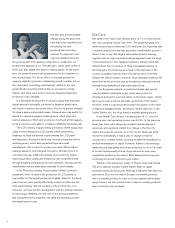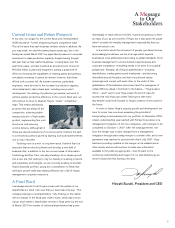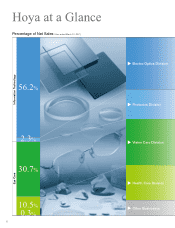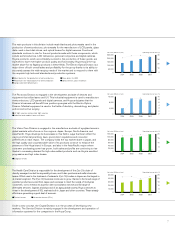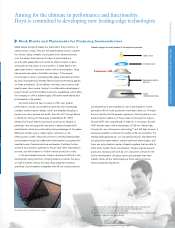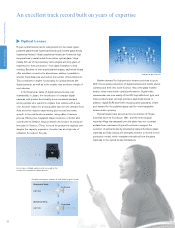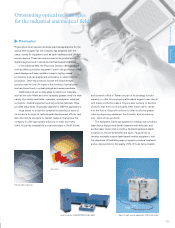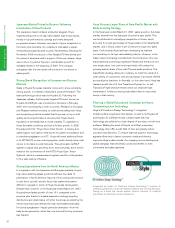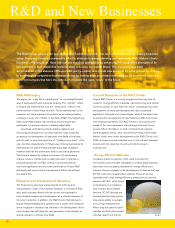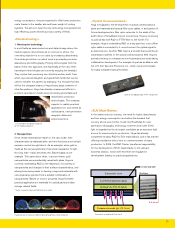Pentax 2007 Annual Report Download - page 14
Download and view the complete annual report
Please find page 14 of the 2007 Pentax annual report below. You can navigate through the pages in the report by either clicking on the pages listed below, or by using the keyword search tool below to find specific information within the annual report.
12
Hoya’s glass molded aspherical lenses used for the
camera lens module for mobile phones
Aspherical glass lenses
Comparison between aspherical and spherical glass lenses
(Aspherical lens)
(Spherical lens)
Light axis
Focal plane
Light axis
Focal plane
Photonics Division
Optical Lenses
Electro-Optics Division
An excellent track record built on years of expertise
Hoya’s optical lenses can be categorized into two basic types:
polished glass lenses (spherical lenses) and molded glass lenses
(aspherical lenses). Hoya’s aspherical lenses are formed at high
temperatures in metal molds from molten optical glass. Hoya
makes full use of its proprietary technologies and long years of
experience in their production—from glass formation to lens
molding. Because of their sophisticated shapes, aspherical lenses
offer excellent correction for aberrations, making it possible to
shorten focal distances and reduce the number of lens elements.
This contributes to higher functionality for optical devices like
digital cameras, as well as to the smaller size and lower weight of
such devices.
In the fiscal year, sales of digital camera lenses rose
dramatically. In Japan, the introduction of compact digital
cameras with greater functionality drove increased demand
among people who wanted to replace their camera with a new
one. Another reason for growing sales was the new demand from
Asia and other regions experiencing pronounced economic
growth. In the mobile phone market, rising sales of camera
phones offering two megapixel image resolution or better also
contributed to demand. Hoya invested new funds in its miniature
lens plant in Suzhou, China, to boost its productive capacity, and
despite the capacity expansion, the plant ran at a high rate of
utilization throughout the year.
Market demand for high-precision lenses continues to grow.
With the increasing resolution of digital cameras and mobile phone
cameras and their new zoom function, they need glass molded
lenses, which have better optical performance. Digital video
cameras also are now mainly of the HD (high definition) type, and
these products also use high-precision aspherical lenses. In
addition, digital SLRs have been enjoying great popularity of late,
and demand for the polished glass used for interchangeable
lenses is also growing.
Optical lenses have served as the cornerstone of Hoya’s
business since its founding in 1941, and the technological
expertise Hoya has amassed over the years has won constant
acclaim from customers. Hoya will continue to support the
evolution of optical lenses by developing high-performance glass
materials and fully utilizing the strengths inherent in its end-to-end
production model, which integrates everything from the glass
materials to the optical lenses themselves.
Optical Lenses




